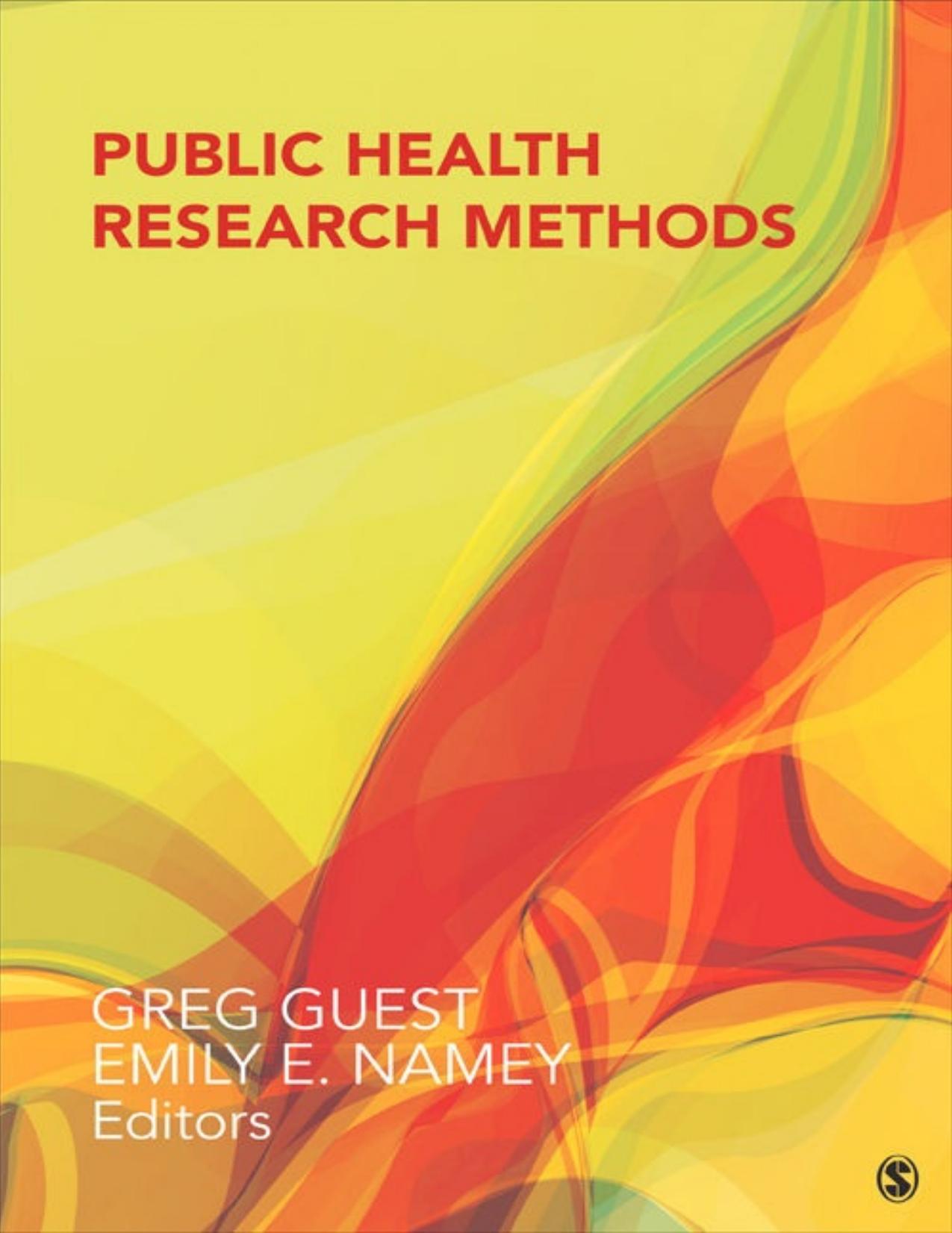Public Health Research Methods by Greg Guest & Emily E. Namey

Author:Greg Guest & Emily E. Namey [Guest, Greg & Namey, Emily E.]
Language: eng
Format: epub, pdf
Publisher: SAGE Publications
Published: 0101-01-01T00:00:00+00:00
• Nominal measurement represents sorting entities into categories (e.g., categorizing drugs into seven schedules). The values are the category labels (e.g., Schedule III), and the entities are those drugs meeting the criteria for the category (e.g., Vicodin and Tylenol with codeine are classified as Schedule III drugs). This represents qualitative measurement.
• Ordinal measurement represents a rank ordering of entities on some quantity, thus permitting greater than and less than statements. We can say, for example, that Patient A appears to be the most energetic, Patient B appears to be next most energetic, Patient C is less energetic than Patient B, and Patient D appears to be the least energetic of the group.
• Interval measurement represents a status of quantitative measurement that we often approximate in the scales that we use. At this level of measurement, the intervals between values are constant across the scale but the zero point is arbitrary (zero does not mean the absence of the quantity). The most common example of an interval scale is temperature, where the difference in heat between 101 and 102 degrees is equal to the difference between 102 and 103 degrees. Because the zero value (on a Fahrenheit or Centigrade scale) does not reflect the absence of temperature, we cannot assert any judgments of ratio or proportion (we cannot legitimately assert that 80 degrees is twice as hot as 40 degrees). A summated response format (e.g., a 5-point response format with 1 representing very little and 5 representing very much), used extensively in public health-related scales, approximates interval measurement. A host of statistical computations (e.g., means, standard deviations) can be meaningfully performed on interval or approximately interval scales.
• Ratio measurement represents the highest level of quantitative measurement. In ratio measurement, the intervals between values are constant across the scale (as is true for interval measurement) but the zero point does indicate the absence of the quantity. Time and distance are two examples of ratio scales. Because the zero value is absolute (e.g., zero distance means no distance), we can derive ratio judgments from the measurement. For example, we can legitimately say that someone who is 6 feet tall is twice as tall as someone who is 3 feet tall. The range of statistical computations applied to interval scales can also be meaningfully performed on ratio scales.
Download
Public Health Research Methods by Greg Guest & Emily E. Namey.pdf
This site does not store any files on its server. We only index and link to content provided by other sites. Please contact the content providers to delete copyright contents if any and email us, we'll remove relevant links or contents immediately.
| Anthropology | Archaeology |
| Philosophy | Politics & Government |
| Social Sciences | Sociology |
| Women's Studies |
Cecilia; Or, Memoirs of an Heiress — Volume 1 by Fanny Burney(32436)
Cecilia; Or, Memoirs of an Heiress — Volume 2 by Fanny Burney(31872)
Cecilia; Or, Memoirs of an Heiress — Volume 3 by Fanny Burney(31857)
The Great Music City by Andrea Baker(31367)
We're Going to Need More Wine by Gabrielle Union(18970)
All the Missing Girls by Megan Miranda(15581)
Pimp by Iceberg Slim(14396)
Bombshells: Glamour Girls of a Lifetime by Sullivan Steve(13977)
Talking to Strangers by Malcolm Gladwell(13225)
Norse Mythology by Gaiman Neil(13209)
Fifty Shades Freed by E L James(13158)
For the Love of Europe by Rick Steves(13034)
Mindhunter: Inside the FBI's Elite Serial Crime Unit by John E. Douglas & Mark Olshaker(9206)
Crazy Rich Asians by Kevin Kwan(9170)
The Lost Art of Listening by Michael P. Nichols(7409)
Enlightenment Now: The Case for Reason, Science, Humanism, and Progress by Steven Pinker(7238)
The Four Agreements by Don Miguel Ruiz(6635)
Bad Blood by John Carreyrou(6553)
Weapons of Math Destruction by Cathy O'Neil(6147)
